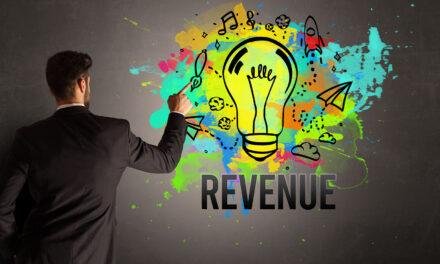With personal identity, there are a lot of ways to define our sense of self. We can define it as self-esteem, self-worth, ego. The fact is, the opinion we have of ourselves is an unbreakable part of our lives. It shapes what we do, think, and our successes and failures.
When thinking of identity, most of us who follow politics think of identity politics. Politicians love identity politics because it gets them votes. When appealing to other people’s values, it’s a win-win because they tap into their core beliefs, which almost guarantee votes.
That politicians can use our identity or belief system to win votes signifies how important a person’s sense of self is. Let’s delve into what Personal identity or a sense of self means.
Understanding Personal Identity
A simple definition of identity: The characteristics that determine who are what we are. Those characteristics include our race, age, gender, ethnicity, physical attributes, sexual orientation. The list can be extensive.
What most of us innately know, but don’t think about, is the idea that each of us has a unique value system. Let’s use a brother and sister as an example. Even if born and raise in the same home, they eventually form their own sense of values. We develop and as we age or grow older, our standards change. The combined elements (some of which are explained below) that create our identity are the premise for understanding how our beliefs, our sense of self, can affect whether we fail or succeed.
The one thing we can say about identity is that it is fluid. Yes, a part of our core identity, such as our culture, our skin color, physical aspects such as height, are unchangeable. Everything else is adaptable. The friends we choose, what we believe, and how we experience life.
As we go through life and our personal identity forms, we can experience stages. We can have a don’t care attitude phase, where nothing matters. We can be in an immersion phase, where adapting to the environment or surroundings is all that matters. Or, we can experience an association phase, where we just want to belong and integrate with our community or those we associate with. In short, we want to be a part of a community or a tribe.
Defining Personal Identity
The elements of what, who, where, when, why and how are the core elements of our identity. View them as a map, which gives us directions and options. We see a clear path of what we want to achieve when we can give voice to these elements.
What?
We are conscious of what’s right and wrong. That being said, what do we stand for? It’s not within us as humans to have a nonchalant attitude about most things, even if we try to be. Eventually, we have to take a side, whether innately or externally. We get to answer a question most of us don’t voice. Whether we are compassionate or indifferent, good or bad.
Why?
The reason we believe, the choices we make, stems from a why? Because we are conscious of right and wrong, we should also be conscious of what we stand for. Our why creates the foundation of our core beliefs and dictates the choices we make.
Who?
Our community, our tribe, are the people in our network. These are the people who shape us. Unknowingly, they guide us towards our personal identity. These are also the people we will stand with and support because they represent our values.
Where?
Where we stand is as important as who we stand with. As an example, if a goal is to end hunger, supporting restaurants that throw their excess food out each night seems contradictory. If pro-choice, it wouldn’t make sense to support an anti-abortion group.
When?
Understanding why creates the premise of when. When denotes a willingness to act. It requires asking if what we believe in is important enough that we will take action.
How?
How we choose to reveal ourselves to the world happens when we clearly understand our core elements of who, what, why, where, and when.
Personal Identity Is A Choice
We choose our principles. We can make those choices because we relate to our core elements. With personal identity, what we stand behind, our actions, who we surround ourselves with define us. Therefore, choose wisely. Because our actions construct our core values and signal to the world what our individual beliefs are.
Using Personal Identity To Get What We Want
How we see ourselves is one of the most important factors that drives success and failure. Our personal identity not only defines the relationship we have with ourselves, but with all other aspects of our lives.
Think in terms of money, people, business, environment and all the other ways our core principles ties into our identity. In the end, our personal identity plays a key part in determining an outcome. It’s easy to see how identity factors can shape not just our lives, but our goals and achievements. How do we use our personal identity to drive our success? Here are three key components to activate.
1. Develop an awareness of habitual identity
Yes, we have one. While identity itself is fluid, our personal identity eventually becomes a habit. The key elements we evaluated earlier in this post helps to establish our habitual identity. An awareness of what we think, say, and feel helps us tune into that part of our identity that becomes habitual.
Remember, our habitual identity happens because of the key elements mention above. Still, as life would have it, we may need to put what we believe aside to accomplish a goal. This is never a simple process and can be daunting. The downside of not being able to separate our goals from our key beliefs is if we do not achieve the goal, we blame ourselves. Separating our habitual identity from our goals may be the key to achieving them.
2. Be Aware of Proactive or Reactive Thinking
Proactive is looking ahead, reactive is staying in place and responding negatively. It’s not hard to see which one we should do our best to avoid. Here are examples of both.
Proactive thinking
- Can
- Will
- Choose
- Want
Reactive thinking
- Can’t
- Impossible
- Should
- Maybe
Related: Personal Power, How To Understand & Embrace it
3. Adapt a growth mindset
Our perceptions are not permanent. Remember, identity itself is fluid. There may be times when questioning our beliefs is necessary to accomplish an aim. This goes back to paying attention to our habitual identity. When we choose to not be unwavering with our thoughts and beliefs, we can achieve so much more. A growth mindset allows us to thrive when face with challenges. These types of mindset thinkers also think out of the box and will be more proactive than reactive.
Summary
Who we are is often growing. When we consider our personal identity, we should think of factors that contribute to it, like our beliefs, our background, experiences, and interests. How we see ourselves, however, should be about our choices and decisions. When trying to accomplish a goal, our perceptions of self, culminating from our personal identity process, dictate our success or failure. Change our perception, and we think differently and create the opportunity to achieve what we want.









